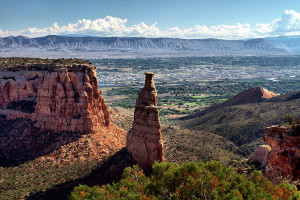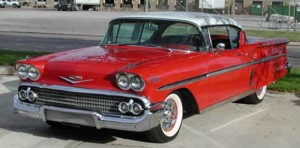The Bookcliffs and the River
The Book Cliffs are the neglected stepchildren of Western Colorado and Eastern Utah. That is somewhat ironic, because they stretch from Palisade and Mt. Garfield about 200 miles to Price, Utah. Rising about 1000 feet from the valley floor, they are the longest escarpment in the world. Above the Book Cliffs is a bench With the Roan Cliffs forming another escarpment Behind the cliffs is the Roan Plateau, rising to about 8000 feet in elevation. With the wide change in elevation and precipitation from eight inches annually to around thirty, there is wide diversity in plant and animal life. There are energy resources as well. Natural gas, tar sands, oil, coal, and that huge deposit of oil shale. The region is known as the Tavaputs Plateau.
The plateau is home to the Desolation Canyon Wilderness and due to the wide range in elevation and precipitation, a diverse range of plant and animal life. There are three reasons why the area is not very popular with visitors.
First, look south. Colorado National Monument, Arches, Canyonlands, Capitol Reef, Bryce Canyon, Zion, and Grand Canyon National Parks. There are the three mountain ranges and all that wondrous red rock carved into some of the best scenery on earth.
Next, accessibility. Douglas Pass is the only paved road in the vast area. The many dirt roads are accessible only as long as they are dry. Traditionally, the only people there were stockmen and the Utes on their reservation. In recent times there has been much energy-related activity that comes and goes.
The third reason? Shale. It is not only shale, there are layers of sandstone, even limestone. It’s all gray or shades of tan. Driving on the drab Mancos shale landscape of I-70, looking north you see drab cliffs. More of the same gray rock, just standing up. Roads built on that shale changes into some of the most slippery substances known after a rain or snow.. People are just not inspired to go there.
Growing up in Fruita, Colorado, I spent quite a bit of time in areas on either side of the Douglas Pass road, which was gravel and dust at the time. We had rancher friends, and deer season was a big social scene. It is wild, mostly empty country, home to lots of cattle, some sheep, a few ranchers, and a lot of wildlife. It is also famous for some of the most treacherous mud in the world. There are some sandstone lenses (we called them rims), but it is mostly shale, a former lake bottom that now sits thousands of feet above the Grand Valley, where the people live.
I used to look at the Colorado National Monument with its red rocks to the south. To the north were the relatively drab Bookcliffs with the whitish Roan Plateau above them. Why the difference? The Monument is famous, with lots of information about the Uncompaghre Uplift lifting the Uncompahgre Plateau thousands of feet compared to the Grand Valley. As the plateau, erosion took the more recent rocks off, leaving the more resistant sandstone.
I thought some sort of uplift must have formed the Bookcliffs. Well, partly. When the entire Colorado Plateau was uplifted at the same time as the Rockies, The Colorado River just dug away, carrying the eroded rock to the sea. It is still digging, and is eroding those Bookcliffs to the north. Under the Bookcliffs are the rocks of the Monument. Someday the land will be fairly flat between Grand Junction and Craig. We won’t be around, however. These things take time.
So, the Colorado Plateau was uplifted and after that the Uncompahgre Plateau went up some more and wore down. The rocks exposed at the Monument are, a few miles north, well below the rocks of the Bookcliffs who are headed north as the river gnaws away. The Colorado River rules, it is just a bit slow.


